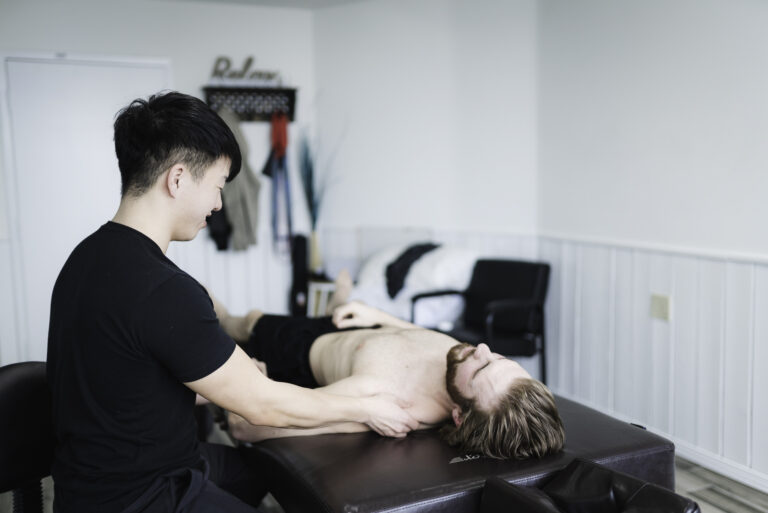What is Frozen Shoulder?
What is Frozen Shoulder?
Frozen shoulder, also known as adhesive capsulitis, is a shoulder condition that is characterized by stiffness and a reduced range of motion in the shoulder joint. It typically progresses through stages and can last from several months to a few years.
In this blog, we’ll talk about frozen shoulder and exercises you can do if you experience adhesive capsulitis.
Who’s at risk?
- Frozen shoulder tends to occur in individuals between the ages of 40-60
- Medical conditions such as diabetes, heart disease, thyroid disorders, and Parkinson’s disease
- Immobilization or inactivity, often due to injury or surgery, can contribute to the symptoms of adhesive capsulitis

Stages of Frozen Shoulder
1. Freezing Stage: This is the initial painful stage where you’ll experience reduced range of motion in your shoulder and a gradual onset of shoulder pain. It typically lasts from a few weeks to several months.
2. Frozen Stage: During this stage, your pain is reduced but the stiffness becomes more prominent. You may feel limitations in your shoulder’s range of motion and movement. This stage can last from several months to a year or more.
3. Thawing Stage: In this stage, you’ll gradually regain shoulder motion and the pain is reduced. A full recovery can take several months to a couple of years.
Treatment for Frozen Shoulder
There are many ways to approach treatment for adhesive capsulitis including;
Physiotherapy: Physiotherapists can assess and provide exercises to improve shoulder range of motion and strength.
Manual Therapy: Individuals can benefit from hands-on approaches provided by massage therapists such as myofascial techniques and joint mobilization techniques.
Home Exercises: Your healthcare provider or physical therapist may recommend specific exercises to perform at home to help you improve your shoulder mobility.
2 Exercises if You’re Experiencing Frozen Shoulder
Here are 2 simple exercises and stretches that can help with frozen shoulder. These exercises may be suggested for a condition or for rehabilitation. While doing these exercises, make sure to do them slowly and pace yourself.
Note: Your healthcare provider will prescribe you exercises that are best for you when the time is right.
1) Shoulder Rolls
Stand comfortably with your feet shoulder-width apart. Roll your shoulders up and down in a circular motion and repeat it 3 to 4 times. You can also do this exercise while sitting.
2) Shoulder Internal Rotation
Start out by holding a band or towel behind your back. Reach as high as you can with your upper hand for a few seconds. Lower back down to starting position and repeat for as much as you can.
It’s important to work closely with a healthcare provider to create a treatment plan catered to your specific condition and needs. Although frozen shoulder can be a frustrating condition to manage, with the right care and rehabilitation, most people recover their shoulder function with time.
